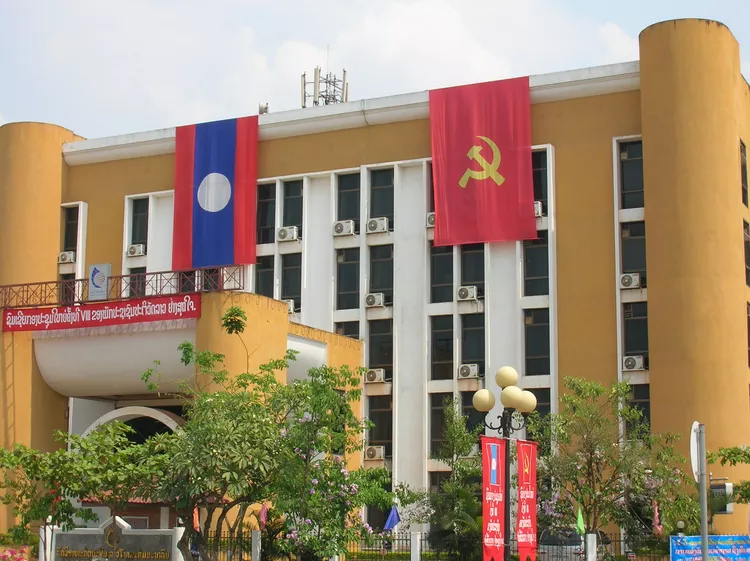Summary
Exploring Vientiane: A Travel Guide
Vientiane, the capital and urban center of Laos, typically serves as only a short stopover for travelers on visa runs or those on their way north to Luang Prabang or Vang Vieng. Nevertheless, some insider Vientiane travel tips will certainly enhance your stay in what many travelers often call the dullest city on the Banana Pancake Trail.
Although Vientiane isn’t particularly packed with things to do and see, the atmosphere in the city is pleasant and far more relaxed than other big cities in Southeast Asia. A daily rhythm left over from the colonial days still lingers.
Lao Culture
- Despite war and hardships in the past, Laotians are extremely friendly to foreign visitors. Avoid creating uncomfortable situations by raising your voice or getting angry enough to cause someone to “lose face.”
- Be cautious about any mention of war, violence, the government, or the current problem of landmines remaining in Laos. Therefore, tread carefully if these topics come up in conversation.
- Use sabai dee (sounds like “sah-bye dee”) as a friendly way to greet anyone, regardless of the time of day. Say thank you with kawp jai (sounds like: “cop jye”).
Hotels and Guesthouses in Vientiane
- Even though Vientiane has an abundance of accommodation options, decent places tend to fill up quickly during the busy months between November and May. Consider making arrangements in advance if traveling during the peak season.
- While neighboring Southeast Asian cities have largely escaped the world’s bedbug resurgence, Vientiane has not been so lucky, as bedbugs are becoming a growing issue in budget hotels, particularly the cheapest backpacker hostels.
- Nearly all guesthouses in Vientiane adhere to the government curfew, locking their doors sometime after 11 p.m. You may need to wake a staff member assigned to the reception area if you come home late.
- Although advertised at nearly every guesthouse, Wi-Fi can be inconsistent in many hotels. Thus, inquire if access is available in your room or only in the common areas. Some hotels might even disable their Wi-Fi — along with other electricity in the lobby — at night.
Food in Vientiane
- Vientiane boasts a great selection of eateries ranging from simple street food noodle stalls with plastic stools to Italian pizzerias and French cafes.
- Vegetarians and vegans can enjoy an affordable buffet in the food court atop the Talat Sao shopping center for just 10,000 Lao kips per plate.
- Forget the instant coffee that pervades much of Southeast Asia, as the coffee in Laos is exceptional! Unless specified otherwise, expect an abundance of milk and sugar in your coffee drinks.
Money in Laos
- When crossing into Laos from Thailand, try to pay the visa-on-arrival fee in U.S. dollars for the best exchange rate. Paying in exact change is preferable; however, if not feasible, you will likely receive change in Thai baht. Visa fees vary by nationality; interestingly, Canadian citizens pay more than Americans.
- Western-networked ATMs can be found throughout Vientiane; however, they are prone to failures and occasionally capture cards. Consequently, it is safest to always use ATMs located at bank branches.
- ATMs impose a hefty fee of US $5 or more per transaction. Therefore, withdraw as much cash as possible per transaction to minimize charges.
- ATMs dispense Lao kip; nonetheless, Thai baht and even U.S. dollars are accepted for payment in many establishments. If paying with a different currency, keep an eye on the exchange rate being offered on the spot. With the exception of paying the visa fee in US dollars upon entry, you’ll typically fare better using Lao kip.
- Tipping is not customary in Southeast Asia; it is not expected in Laos.
- Prices for goods can usually be negotiated; friendly haggling remains an integral part of Lao culture. Even for rooms in guesthouses, negotiation is possible during the low season, particularly for longer stays. However, avoid haggling over food or fixed-price items such as bottled water.
- Lao kip is practically useless outside the country and cannot be exchanged; therefore, use all your local currency before you leave.
Getting Around Vientiane
- Like other parts of Southeast Asia, you’ll encounter numerous offers from tuk-tuk drivers while walking the streets. Flagging a taxi is typically cheaper than getting a ride from a driver stationed outside tourist areas.
- Taxis and tuk-tuks do not use meters. Therefore, negotiate a fare before boarding.
Nightlife in Vientiane
- Don’t expect many late nights in Vientiane. Due to a city-wide curfew, all but a small handful of ‘underground’ venues close around 11:30 p.m. or midnight.
- Beer Lao is renowned throughout Southeast Asia as a cheap yet quality beer. At 5% alcohol, a tall (640 ml) bottle can cost as little as US $1.50, even in bars and restaurants. Indeed, a bottle of beer can be cheaper than a cup of coffee!
- Bor Pen Nyang, located on the main river street near the traveler’s area, may not look like much from the street, but the fourth-floor rooftop bar is popular among locals, travelers, and expats. The bar provides a scenic view of the river alongside a wide selection of food and drinks, closing around midnight.
- Prostitution is prevalent in Vientiane, especially on the streets surrounding bar closing times.
Health and Safety
- Mosquitoes pose a genuine problem in Vientiane, especially during the rainy season. Although malaria isn’t a significant concern, dengue fever is a real risk.
- Tap water is unsafe to drink in Laos. Bottled water is readily available, and the free drinking water and ice offered in reputable restaurants are safe for consumption.
You should have a good travel insurance policy and obtain the recommended vaccinations for Asia before visiting Laos.




